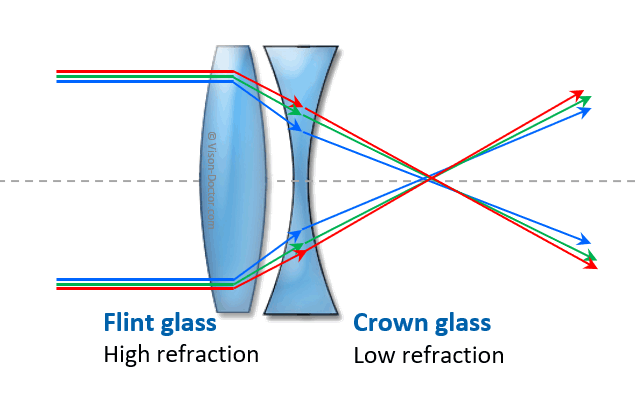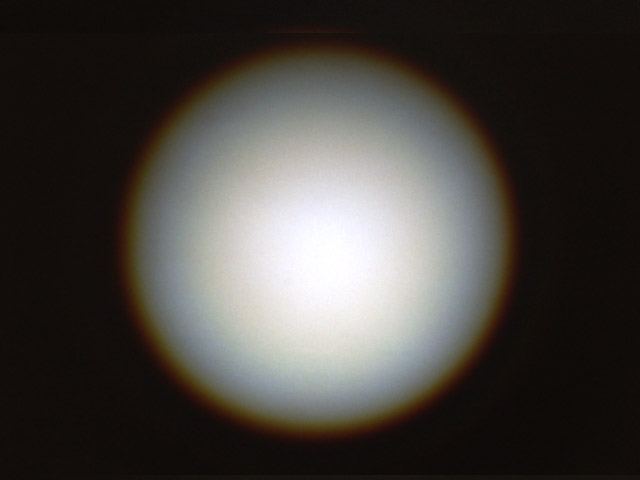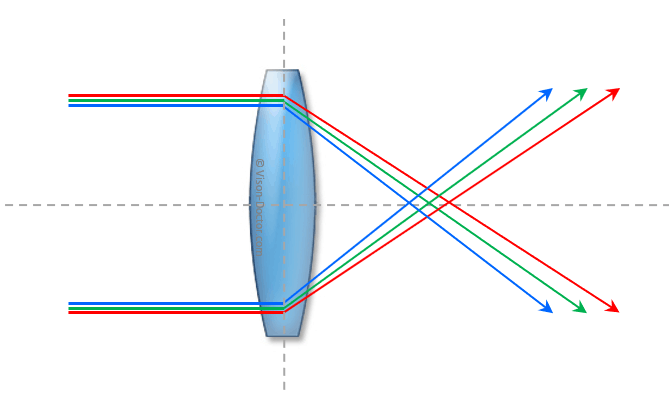Chromatic aberration
The chromatic longitudinal error, also called chromatic aberration, is a normal effect in the first place which appears on all spherical lenses. The light refraction effect of a prism is based on this effect: the refraction of light depends on the wavelength, i.e. on the colour of the light used, the focal point of a lens shifts according to the wavelength.
Chromatic aberration
Chromatic longitudinal error
Particularly when using extreme wide-angle optics and differently coloured illumination, this leads to significantly diminished or enlarged images, as the focal points (and thus the focal length of the lens) shift.
The error can be remedied by stopping down the lens, as this generates an enhanced depth of field and reduces the blurred zones.
By way of design, this error can be corrected by grouping two lens elements, so-called dichromates. The longitudinal aberration effects of a highly refractive and a lowly refractive diverging lens neutralise each other. As an alternative, very expensive aspheric lenses can be used, too.
 |
The lateral aberration has the same cause as the longitudinal aberration and occurs with rays of light close to the margin. Differently coloured parts of the image appear in different size. This error cannot be corrected by stopping down.
Colour-corrected lenses
Especially in case of colour applications it is important that there are no colour errors in the image. From their design, colour-corrected lenses set great value on the avoidance of chromatic aberration. If the lens is corrected for the two colours blue and red, we speak of achromates. If the lenses are optimised for blue, green and red light to avoid colour errors, we speak of apochromatic correction. In practice you will soon notice whether your lens is corrected in this respect or not. Illuminate with red light and focus your image. Now change the light and use blue illumination. If the image has become blurred and you had to re-focus, your lens is not specially corrected. The shift of the focal point is even more extreme when using IR illumination. There are special IR corrected lenses for these applications.
Important for machine vision
- The chromatic longitudinal errors can be compensated slightly by stopping down the optics, the chromatic lateral error unfortunately not. Please stop down slightly!
- When using a monochrome camera system, this error is visible in the image, too, yet not as a coloured but grey fringe. If the use of white light is not stringently required, you can work with coloured monochromatic LED light. A chromatic longitudinal error cannot arise at all in this way.
- Buy proper optics the lens design of which corrects as many errors as possible.









